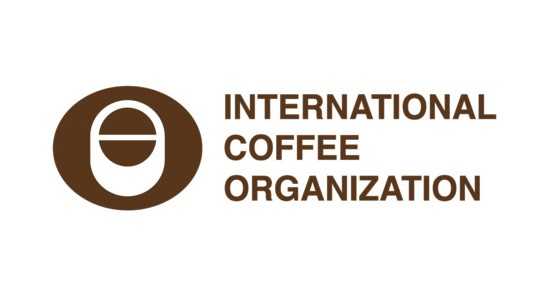LONDON, UK – According to the ICO Coffee Market Report, the ICO composite indicator continued to rise to new highs in December 2019, ranging between 111.80 and 123.69 US cents/lb. Prices for all Arabica indicators rose in December 2019, while Robusta prices decreased 0.1% to 73.22 US cents/lb. Firm demand and the current tightness in the market has helped to put upward pressure on prices.
Exports in the first two months of coffee year 2019/20 declined by 10.8% to 18.3 million bags.
Exports from all coffee groups decreased during this period, except Colombian Milds, which rose by 2.2% to 2.6 million bags. Global coffee output is estimated at 168.71 million bags in 2019/20, 0.9% lower than last year as Arabica production is estimated to decline by 4.1% to 96.22 million bags while Robusta grows by 3.7% to 72.5 million bags.
In coffee year 2019/20, coffee consumption is estimated to increase by 1.24 million bags to 169.34 million bags.
Coffee market situation
This would result in a deficit of 0.63 million bags in 2019/20, which puts upward pressure on prices. However, this may be limited as more of the 2019/20 crop enters the market as well as a larger crop is anticipated from Brazil in its 2020/21 crop year commencing in April
The ICO composite indicator continued to rise in December 2019, peaking at 123.69 US cents/lb on 16 December 2019. The daily price of the ICO Composite averaged 117.37 US cents/lb in December, an increase of 9.5% from November, and is the highest monthly average since October 2017 when it reached 120.01 US cents/lb.
During the month, the lowest level that the daily ICO composite indicator reached was 111.80 US cents/lb on 4 December, which was still higher than any of the monthly averages in the previous 18 months.
Exports from Brazil have slowed in the past few months compared to a year ago while harvests from some origins with an October-September crop year were delayed. This tightening of supply as well as strong demand has helped to put upward pressure on prices.
Prices for all Arabica indicators rose in December 2019, suggesting that the shortfall in the market is limited to Arabica coffee, particularly for higher quality growths. Brazilian Naturals saw the largest increase, of 14.9%, to 126.36 US cents/lb, as exports from Brazil have slowed.
Other Milds rose 11.4% to 157.11 US cents/lb, while Colombian Milds rose 10.5% to 161.5 US cents/lb. The differential between Colombian Milds and Other Milds narrowed in December 2019, falling 14.6% to 4.39 US cents/lb. Prices for Robustas decreased 0.1% month-on-month to 73.22 US cents/lb, partly in anticipation of large volumes of Robusta from Viet Nam and Indonesia.
The spread between Arabica and Robusta coffees, as measured on the New York and London futures market, increased to 67.57 US cents/lb,
which is the fourth consecutive month of increase. The New York futures market (Arabica) rose 16% to an average of 131.44 US cents/lb in December 2019, the highest monthly average since September 2017, while the London futures market (Robusta) rose by 1.4% to 63.87 US cents/lb.
Certified Arabica stocks fell to their lowest levels since May 2018, reaching 2.32 million bags in December 2019. This is the ninth month in which certified Arabica stocks have fallen month-on-month, and suggests a tight supply of Arabica coffee.
The volatility of the ICO composite indicator increased 2.6 percentage points to 9.7% over the past month. Among the Arabica group indicators, the volatility of Brazilian Naturals saw the biggest increase—of 2.9 percentage points—to 12.1%, while the volatility of Colombian Milds and Other Milds rose by 2.3 percentage points to 9.5% and 2.7 percentage points to 9.6%, respectively.
The Robustas group indicator volatility was 8.8%, an increase of 2.6 percentage points from November 2019.
Global exports down in November
Global exports in November 2019 totalled 9.31 million bags, compared with 10.22 million in November 2018. Exports in the first two months of coffee year 2019/20 have decreased by 10.8% to 18.3 million bags compared to 20.51 million bags in the same period in 2018/19.
During this period, shipments of Arabica fell 11% to 11.93 million bags and Robustas declined by 10.5% to 6.37 million bags.
In the past 10 years, global coffee production has grown at an average annual rate of around 2.6% from 140.16 million bags in 2010/11 to an estimated 168.71 million bags in 2019/20.
Arabica production in the current coffee year is estimated to decrease by 4.1% to 96.22 million bags, which largely reflects the off-year of the biennial cycle of Arabica production in Brazil. However, world Robusta production is estimated to rise by 3.7% to 72.47 million bags.
Globally, the three largest producers of all types of coffee are Brazil, Viet Nam, and Colombia, which are now accounting for nearly 70% of global production.
A decade ago, these three countries represented just under 60% of the global output. In crop year 2019/20, Brazil’s total production is estimated at 57 million bags, which is 12.2% lower than last year. This is due largely to a decline in its Arabica production, which is estimated to decrease by 18.6% to around 37 million bags while its Robusta output grows by 2% to around 20 million bags. In the first eight months of its crop year, Brazil exported 26.95 million bags of coffee, of which 10.2% was processed coffee.
During this same period, it shipped 21.28 million bags of green Arabica coffee and 2.94 million bags of green Robusta. While exports in the first 8 months are 14.1% higher than in April to November 2018, the pace has recently slowed. Brazil’s shipments of green Arabica reached 10.76 million bags in August to November 2019, 8% lower than the same period one year ago, which is more reflective of the current year’s crop.
Production in Viet Nam is expected to grow by 4.4% to 31.2 million bags in crop year 2019/20. Sufficient water for irrigation during the growing season is expected to boost productivity. Exports in the first two months of its crop year are estimated at 3.25 million bags, 27.6% lower than in the first two months of 2018/19. This decline can be attributed to prevailing low domestic prices, which are causing farmers to hold onto their coffee, and to heavy rains at the start of the season which delayed harvesting.
Colombia is the world’s second largest producer of Arabica, and its harvest in 2019/20 is forecast to reach 14.1 million bags, 1.7% higher than in 2018/19. In the first two months of crop year 2019/20, the National Federation of Colombian Coffee Growers reported that Colombia produced 2.88 million bags, 20.5% higher than the previous year.
During the same period, Colombia shipped 2.37 million bags of coffee in the first two months of its crop year, 3.1% higher than one year ago, and these likely included sales from last year’s crop as farmers were encouraged by higher prices.
Consumption is projected to grow by 0.7%
The long-term average annual growth rate for coffee demand is 2.2% as consumption has risen from 90.71 million bags to an estimated 169.34 million bags in 2019/20. Compared to one year ago, global demand growth in 2019/20, projected at 0.7%, is 2.7 percentage points less than in 2018/19, but still represents an increase of 1.24 million bags in overall demand.
This also follows an increase of 3.4% to 168.1 million bags in 2018/19, which was above the long-term average. The result in 2018/19 was mainly due to growth in both Europe and North America where consumption rose by 4.9% to 55.73 million bags and by 5.7% to 31.64 million bags, respectively.
Lower prices during the past coffee year likely supported greater imports and consumption in these countries, but may slow in the current year as prices have risen. Further, a slowdown in global economic growth, particularly for emerging markets and developing economies, as described by the International Monetary Fund in its October 2019 World Economic Outlook, could dampen growth in coffee consumption.
In 2019/20, demand is expected to decline by 0.6% to 55.4 million bags in Europe.
In its Autumn 2019 Economic Forecast, the European Commission noted that the European Union was facing a number of shocks that would likely impair economic growth in the next year.
Consumption in North America is estimated to reach 31.88 million bags, 0.7% higher than in 2018/19. After a lower rate of growth in 2018/19, consumption in Asia & Oceania is projected to partially recover, growing by 2.9% to 37.51 million bags. Demand in Africa is forecast to increase by 1.8% to 11.94 million bags, in Central America & Mexico by 1.4% to 5.47 million bags, and in South America by 0.1% to 27.14 million bags.
The increase in demand against a fall in production has resulted in an estimated global deficit of 0.63 million bags for 2019/20. The current tightness in the market is not likely to last throughout the year as more of the current crop as well as ample supplies from Brazil’s on-year crop in 2020/21 reach the market. This could limit further increases in coffee prices later in the coffee year.

















